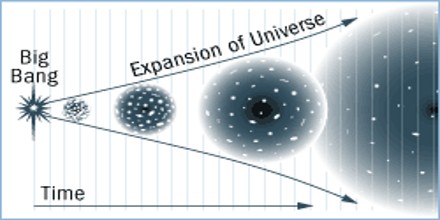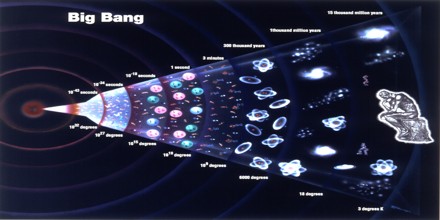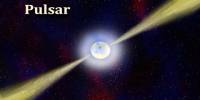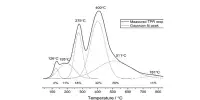Big Bang Theory
Definition
The Big Bang Theory is the leading explanation about how the universe began. A scientific theory describing the origin of all space, time, matter, and energy approximately 13.7 billion years ago from the violent expansion of a singular point of extremely high density and temperature.
The Big Bang theory is an effort to explain what happened at the very beginning of our universe. Discoveries in astronomy and physics have shown beyond a reasonable doubt that our universe did in fact have a beginning. Prior to that moment there was nothing; during and after that moment there was something: our universe. The big bang theory is an effort to explain what happened during and after that moment.

There are many misconceptions surrounding the Big Bang theory. For example, we tend to imagine a giant explosion. Experts however say that there was no explosion; there was and continues to be an expansion. Rather than imagining a balloon popping and releasing its contents, imagine a balloon expanding: an infinitesimally small balloon expanding to the size of our current universe.
Evidence for the Theory –
The major evidences which support the Big Bang theory are:
- First of all, we are reasonably certain that the universe had a beginning.
- Second, galaxies appear to be moving away from us at speeds proportional to their distance. This is called “Hubble’s Law,” named after Edwin Hubble (1889-1953) who discovered this phenomenon in 1929. This observation supports the expansion of the universe and suggests that the universe was once compacted.
- Third, if the universe was initially very, very hot as the Big Bang suggests, we should be able to find some remnant of this heat. In 1965, Radioastronomers Arno Penzias and Robert Wilson discovered a 2.725 degree Kelvin (-454.765 degree Fahrenheit, -270.425 degree Celsius) Cosmic Microwave Background radiation (CMB) which pervades the observable universe. This is thought to be the remnant which scientists were looking for. Penzias and Wilson shared in the 1978 Nobel Prize for Physics for their discovery.
- Finally, the abundance of the “light elements” Hydrogen and Helium found in the observable universe are thought to support the Big Bang model of origins.

Determining the Age of the Universe
The cosmic microwave background has been observed on many missions. One of the most famous space-faring missions was NASA’s Cosmic Background Explorer (COBE) satellite, which mapped the sky in the 1990s.
Several other missions have followed in COBE’s footsteps, such as the BOOMERanG experiment (Balloon Observations of Millimetric Extragalactic Radiation and Geophysics), NASA’s Wilkinson Microwave Anisotropy Probe (WMAP) and the European Space Agency’s Planck satellite.
Planck’s observations, released in 2013, mapped the background in unprecedented detail and revealed that the universe was older than previously thought: 13.82 billion years old, rather than 13.7 billion years old.

Structure Formation
The slightly denser regions of the nearly uniformly distributed matter gravitationally attracted nearby matter and thus grew even denser, forming gas clouds, stars, galaxies, and the other astronomical structures observable today. The details of this process depend on the amount and type of matter in the universe. The four possible types of matter are known as cold dark matter, warm dark matter, hot dark matter, and baryonic matter. The best measurements available (from WMAP) show that the data is well-fit by a Lambda-CDM model in which dark matter is assumed to be cold, and is estimated to make up about 23% of the matter/energy of the universe, while baryonic matter makes up about 4.6%. In an “extended model” which includes hot dark matter in the form of neutrinos, then if the “physical baryon density” Ωbh2 is estimated at about 0.023, this is different from the ‘baryon density’ Ωb expressed as a fraction of the total matter/energy density, which as noted above is about 0.046, and the corresponding cold dark matter density Ωch2 is about 0.11, the corresponding neutrino density Ωvh2 is estimated to be less than 0.0062.

Gravitational Waves Controversy
While astronomers could see the universe’s beginnings, they’ve also been seeking out proof of its rapid inflation. Theory says that in the first second after the universe was born, our cosmos ballooned faster than the speed of light. That, by the way, does not violate Albert Einstein’s speed limit since he said that light is the maximum anything can travel within the universe. That did not apply to the inflation of the universe itself.
In 2014, astronomers said they had found evidence in the CMB concerning “B-modes,” a sort of polarization generated as the universe got bigger and created gravitational waves. The team spotted evidence of this using an Antarctic telescope called “Background Imaging of Cosmic Extragalactic Polarization”, or BICEP2.
The results from Planck were put online in pre-published form in September. By January 2015, researchers from both teams working together “confirmed that the Bicep signal was mostly, if not all, stardust”.
















